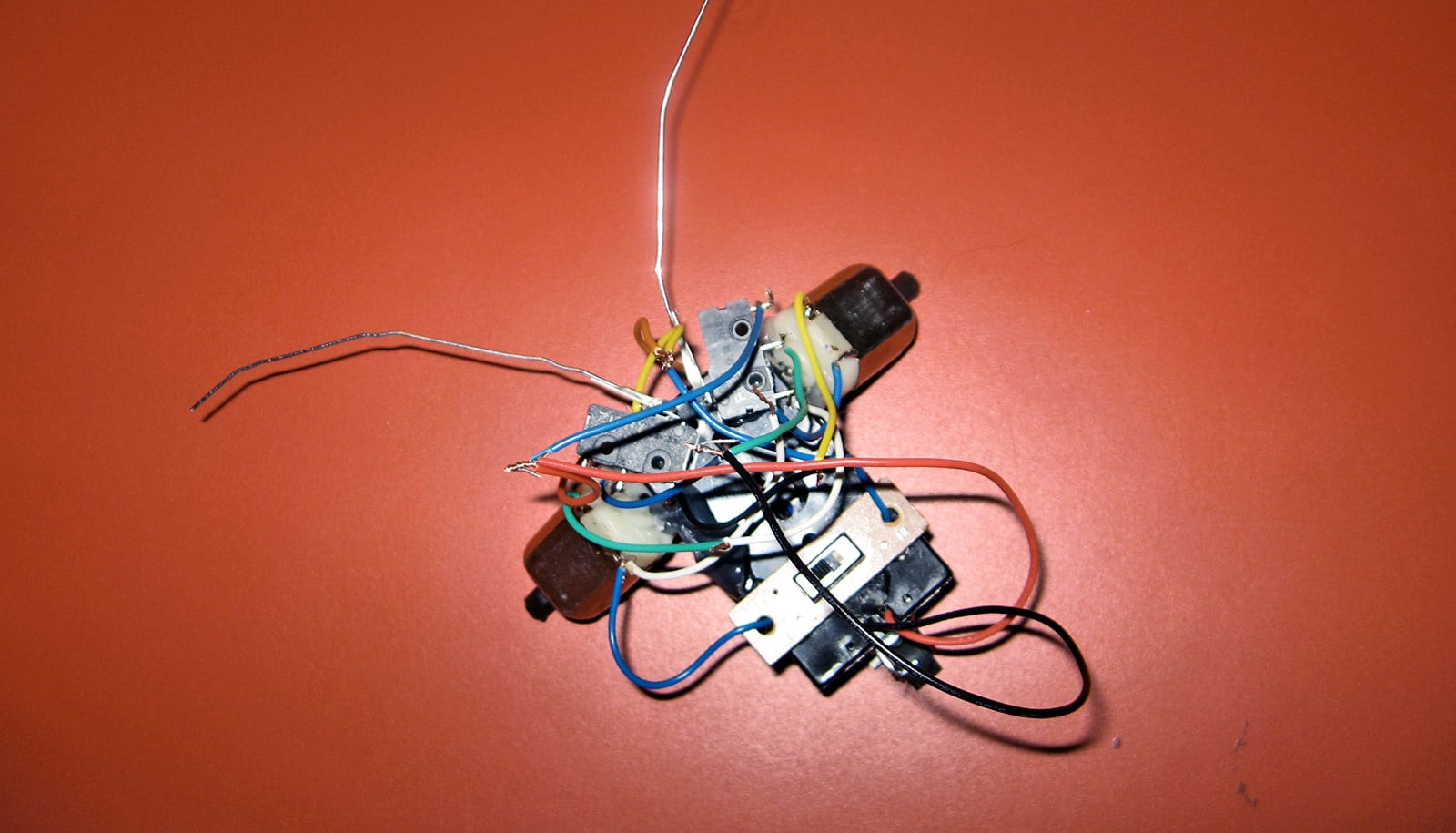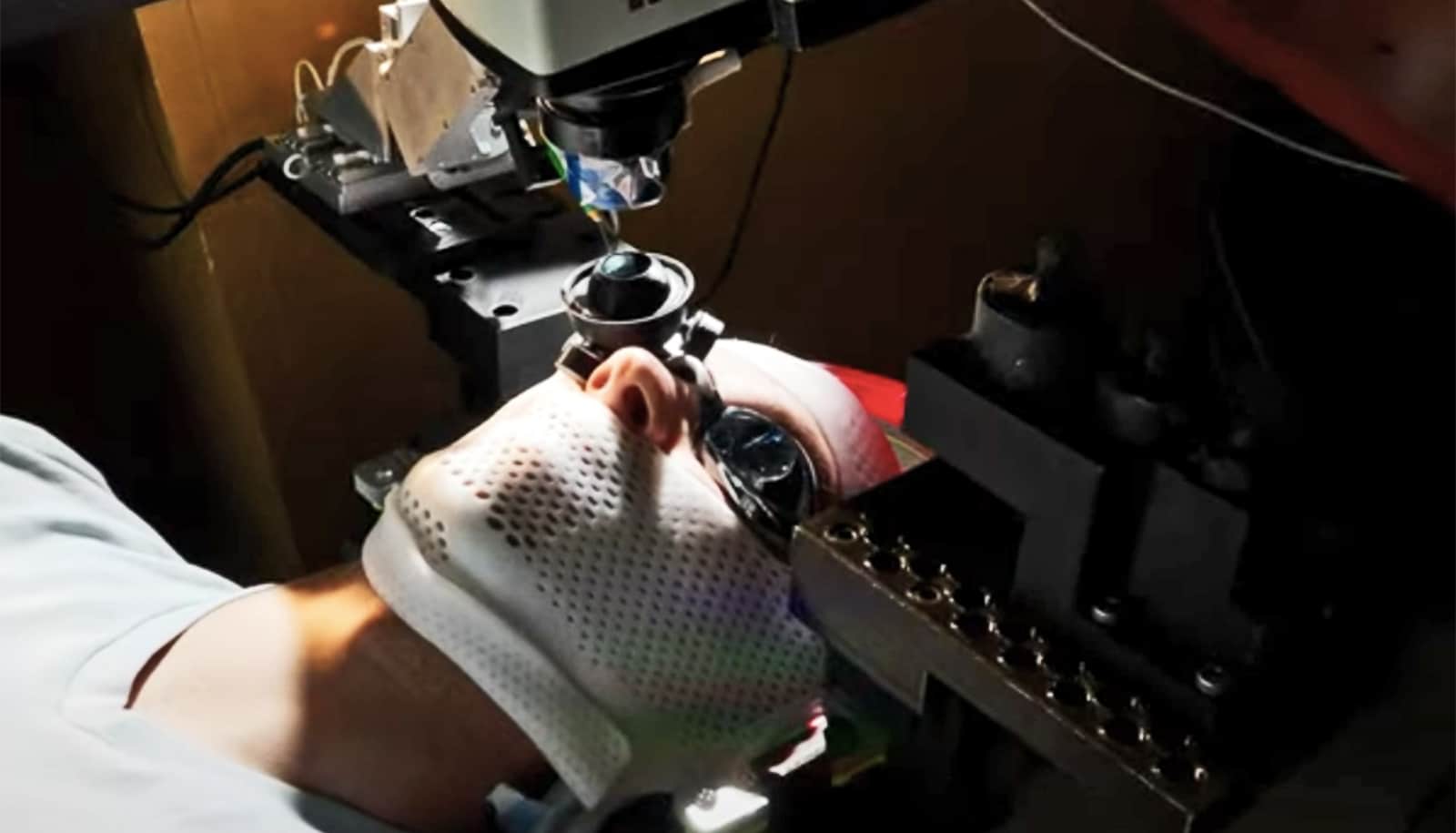Researchers have created a robot “exoskeleton” that can rapidly change its shape by sensing shifts in its environment.
The researchers say these microscale machines—equipped with electronic, photonic, and chemical payloads—could become a powerful platform for robotics at the size scale of biological microorganisms.
“You could put the computational power of the spaceship Voyager onto an object the size of a cell,” Cohen says. “Then, where do you go explore?”
“We are trying to build what you might call an ‘exoskeleton’ for electronics,” says Paul McEuen, a professor of physical science and director of the Kavli Institute at Cornell University for Nanoscale Science. “Right now, you can make little computer chips that do a lot of information-processing… but they don’t know how to move or cause something to bend.”
The machines move using a motor called a bimorph. A bimorph is an assembly of two materials—in this case, graphene and glass—that bends when driven by a stimulus like heat, a chemical reaction, or an applied voltage. The shape change happens because, in the case of heat, two materials with different thermal responses expand by different amounts over the same temperature change.
As a consequence, the bimorph bends to relieve some of this strain, allowing one layer to stretch out longer than the other.

By adding rigid flat panels that cannot be bent by bimorphs, the researchers localize bending to take place only in specific places, creating folds. With this concept, they are able to make a variety of folding structures ranging from tetrahedra (triangular pyramids) to cubes.
In the case of graphene and glass, the bimorphs also fold in response to chemical stimuli by driving large ions into the glass, causing it to expand. Typically, this chemical activity only occurs on the very outer edge of glass when submerged in water or some other ionic fluid. Since their bimorph is only a few nanometers thick, the glass is basically all outer edge and very reactive.
“It’s a neat trick, because it’s something you can do only with these nanoscale systems,” says lead study author Marc Miskin, a postdoctoral researcher at Cornell.
The bimorph is built using atomic layer deposition—chemically “painting” atomically thin layers of silicon dioxide onto aluminum over a cover slip—then wet-transferring a single atomic layer of graphene on top of the stack. The result is the thinnest bimorph ever made.
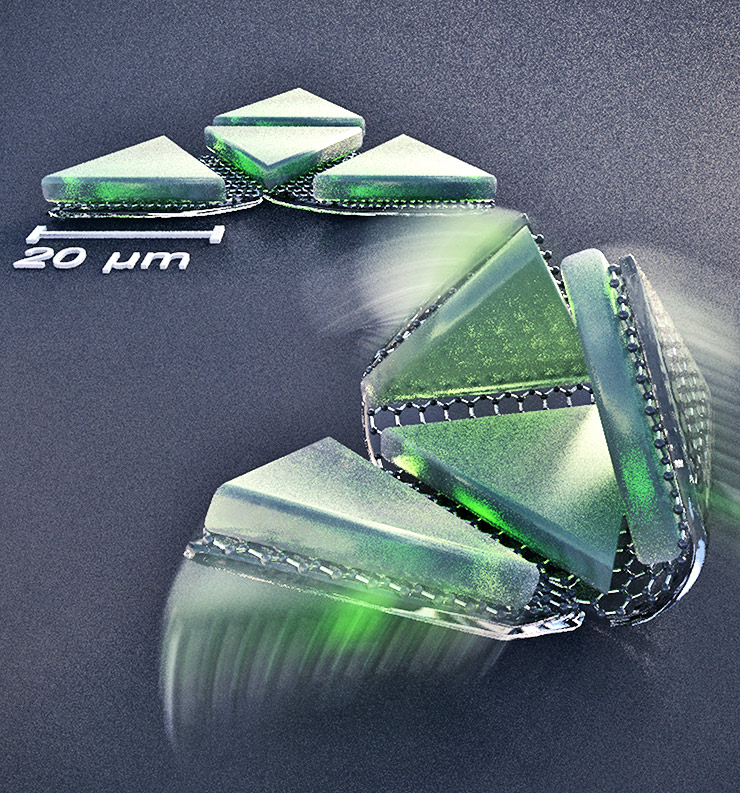
One of their machines was described as being “three times larger than a red blood cell and three times smaller than a large neuron” when folded. Folding scaffolds of this size have been built before, but this group’s version has one clear advantage.
“Our devices are compatible with semiconductor manufacturing,” says study author Itai Cohen. “That’s what’s making this compatible with our future vision for robotics at this scale.”
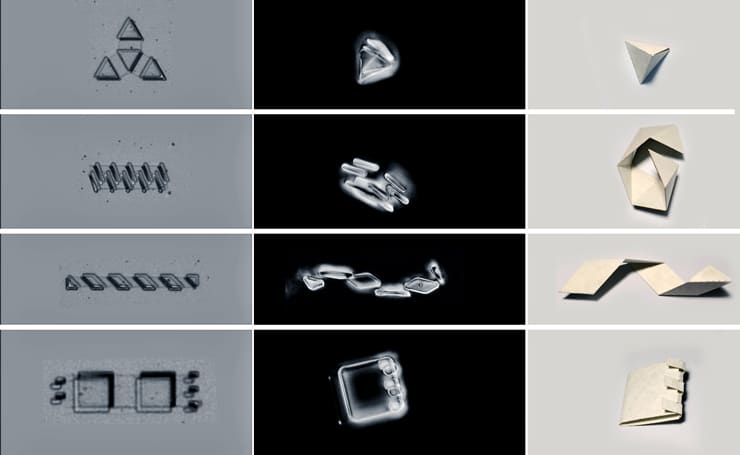
And due to graphene’s relative strength, Miskin says, it can handle the types of loads necessary for electronics applications.
“If you want to build this electronics exoskeleton,” he says, “you need it to be able to produce enough force to carry the electronics. Ours does that.”
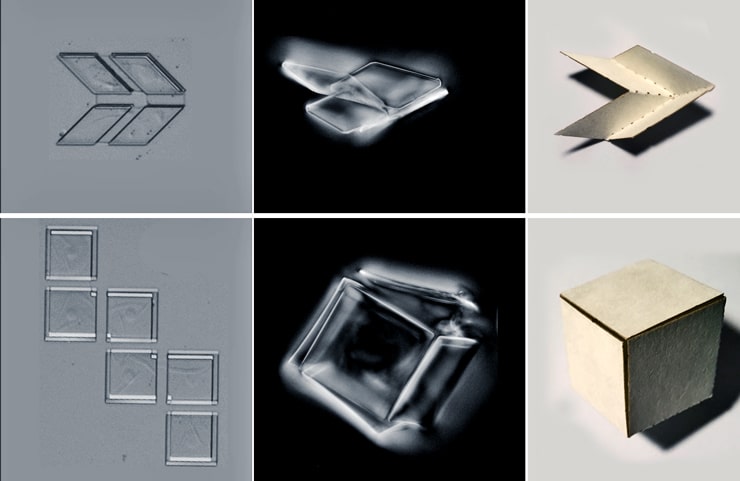
For now, these tiniest of tiny machines have no commercial application in electronics, biological sensing, or anything else. But the research pushes the science of nanoscale robots forward, McEuen says.
“Right now, there are no ‘muscles’ for small-scale machines,” he says, “so we’re building the small-scale muscles.”
Watch: VR lets users control robots from miles away
The researchers outline their work in the Proceedings of the National Academy of Sciences.
The researchers performed the work at the Cornell NanoScale Facility for Science and Technology. The Cornell Center for Materials Research, the National Science Foundation, the Air Force Office of Scientific Research, and the Kavli Institute at Cornell supported the research.
Source: Cornell University
